 HydraFacial®
HydraFacial®Why Blue Beauty Is The Next Generation Of Clean Beauty
If you’ve already gone green, it’s now time to go blue.
‘Clean’ and ‘green’ beauty are now household terms. And, on the heels of these once-trendy buzzwords, comes the next iteration of sustainability and eco-consciousness in the industry: Blue beauty. For the uninitiated, blue beauty isn’t just about water. Instead, it focuses on conserving, protecting, limiting harm, and undoing damage to the planet by safely harvesting botanical ingredients, reducing waste, and minimizing environmental damage to both the oceans and the planet as a whole.
Terms like ‘organic,’ ‘vegan,’ and ‘planet-friendly’ (among others) were once relegated to the health food aisle, but they are now part of the mainstream beauty vernacular. As people from all walks of life are taking a more intentional and holistic approach to makeup, skincare, hair care, wellness, and the like, industry giants like Sephora and Credo have responded by implementing specific parameters that require formulations to be void of certain ingredients. All the while brands are increasingly transparent about their values and how that trickles down into what you find in their tubes.
So, what do you need to know about blue beauty? We’re breaking it down below.
What Is Blue Beauty?
Blue beauty is more than a term, it’s a full-fledged movement spearheaded by Jeannie Jarnot, the founder of Beauty Heroes, a discovery-based shopping destination focusing on healthy beauty and well-being. “Blue beauty is the new green beauty, and it’s about safe, healthy, and sustainably sourced ingredients, as well as ocean-safe ingredients, and reused and recyclable packaging,” says Kevin Wachs, CEO and founder of Earthly Body. “It’s also about limiting our impact on this planet and its inhabitants, actively contributing to a healthier planet, giving back to the community, and a concern for people over profits.”
Blue beauty is about more than just being nontoxic, organic, clean (the definition of which differs from one person to the next since there is no set standard), or sustainable. The true differentiator, according to Jarnot, is that the brands who are truly ‘blue’ give back (in some way) to help preserve the planet. It’s easy to miscategorize blue beauty as merely ocean-friendly, but that’s not how Jarnot defines it. “Just like how green beauty doesn’t apply just to preserving trees and plants but is more about general sustainability efforts, blue beauty is about giving back to the planet,” she explains. Ocean reef-safe options are imperative in the overall blue beauty scheme, as are the land and air. “We need to do our part to make up for the damage that we’ve done to the planet and help clean it up,” she says.
The Blue Beauty Backstory
“I have always been interested in things that help the planet, like beach cleanups, and I wanted to connect people to brands that were doing good for the environment,” Jarnot says, explaining her initial involvement with blue beauty. At an industry conference, Jarnot, who, at the time, was already working on several planet-positive initiatives, met a trend analyst who clued her in on blue beauty. “He told me that as a brand if you aren’t already green and thinking about how to become sustainable, you’re so far behind the mark,” she recalls. “And he was right — consumers want companies to go blue and make a positive impact on the environment through business.”
She began creating content and telling the stories of brands diving head first into the proverbial blue beauty pool and making it a part of their brand DNA. “The goal, when it comes to the environment, has always been to share and not make the information proprietary,” she says. “We can all make positive impacts on the environment, and I knew that putting educational content out there would inspire more brands to follow suit.” And follow suit they did. “Brands watched one another and began to share resources and collaborate to do good by our planet,” she notes.
Today, many brands are instilling planet-positivity practices and principles into their brand culture and ethos. “Just as consumers have a responsibility to protect the planet, beauty brands have to do the same, too,” Jarnot says. While the concept only works if both brands and consumers partake equally, the general thought is to create a healthier, more sustainable planet by undoing the damage of the past with an eye firmly on the future. Companies that partake do anything from sourcing non-GMO, organic, wild-harvested ingredients to using minimal outer packaging that’s biodegradable, upcycled, or reusable. Many are also certified carbon-neutral and plastic negative, completely transparent in their supply chain, and choose to work with local farmers and suppliers.
Blue Beauty vs. Green Beauty
At this point you might be wondering: What’s the difference between blue beauty and green beauty? “The line between green and blue is blurry,” Jarnot admits. But, in a nutshell, green beauty is blue beauty. “For example, green beauty is about incorporating organic ingredients, yet blue beauty works to generate and support independent farmers while being intentional and supporting locally,” she explains.
There’s plenty of crossover between the two categories, but here’s where they draw a line in the sand:
- Green beauty promotes sustainably sourced and environmentally-friendly ingredients and packaging, while being vegan, cruelty-free, and void of harmful ingredients.
- Blue beauty works towards the end goal of rehabbing planet Earth through the use of plastic-free and recycled materials and locally sourced ingredients while preserving natural ecosystems and giving back via beach and park clean ups and reducing landfill waste.
One doesn’t supersede the other — they work together as part of a greater good. However, Jarnot believes blue beauty to be more comprehensive because it explicitly involves protecting the planet while also promoting positive environmental well-being. She says that “brands that take a stance on blue beauty are conscious of what is currently happening to our planet and want to do everything humanly possible to help undo the damage that has incurred.”
Other supporters of the cause agree. “Blue beauty goes a step further in terms of sustainability and environmentalism,” Wachs says. “Unlike green beauty or clean beauty, this is more than just including natural ingredients in each product.” As he explains, blue beauty is also about “reducing the negative impact of waste on the environment and our carbon footprint.” As a result, this movement “is significant for our aquatic ecosystems like rivers, lakes, and oceans, which have an enormous impact on the world,” he notes.
Creating Cleaner Waters
If you assumed blue beauty is synonymous with preserving our oceans, we don’t blame you. Part of the confusion may have to do with the fact that sunscreen was one of the first product categories to come under fire from blue beauty activists. Take, for example, two commonly used chemical sunscreen ingredients — oxybenzone and octinoxate. Both are known to bleach coral reefs, but it’s not only sunscreens that do damage to our waters and the planet as a whole. Moisturizers, creams, and many hair products contain SPF and are just as capable of causing destruction. The same goes for exfoliators and body scrubs with plastic particles, which is why sugar- and salt-based exfoliators are better options. Even deodorants are said to contain damaging microscopic particles and chemicals.
The beauty industry has more of an impact on the planet’s waters than one may think. Packaging is a huge part of the problem here. Wachs says that single-use plastic is the biggest enemy of the ocean and is devastating to our planet. “This is why we (as a brand) use glass and aluminum,” he notes. Many of the components that end up polluting the ocean do so because they are not recyclable or made from recyclable materials. Plastic-free beauty and eco-friendly packaging — like FSC-certified paper and 100-percent post-consumer packaging materials and soy inks — that minimize environmental impact is essential, too, says Lisa Fennessy, the founder of This Organic Girl.
How to Go Blue
Not every beauty brand launches out of the gate subscribing to the blue beauty methodology, but plenty do. Case in point: the calendula-powered indie skincare line, Zia Botanics. Founder Andra Maddox harvests the seed-to-skin products on her company's own New Mexico-based farm. The hero ingredient, calendula, powers all products and relies on a hundreds-of-year-old historical acequia system. “In simple terms, we use snowmelt and rainwater that collects from the Sangre de Cristo Mountains to grow pure, supercharged plants with traditional, sustainable methods,” she explains. “I believe simpler is better for the environment as well as our bodies, and the products contain 10 ingredients or less.” Maddox also packages her products in earth-friendly glass bottles and biodegradable tubes and offers refills to encourage reuse and help eliminate single-use waste. “The brand is committed to being good ancestors for the earth and future generations,” she adds.
Beauty brands can also adapt to blue beauty standards over time. Jarnot says that these are the easiest ways for a brand to implement causes for the greater good of Mother Earth:
- Be transparent about sourcing
- Embrace fully organic ingredients
- Use planet-friendly zero-waste packaging and processes
- Implement carbon offsets
- Focus on renewable resources
- Divert bio-waste into raw materials
- Offer refillable options
- Use reusable shipping boxes
Charity is also a considerable part of the blue beauty DNA. And it's not just financial contributions that round out the cause — it's also cleanup efforts that make a monumental impact. “One of the first initiatives some brands do, which is great, is to plant a tree for a dollar amount or goal,” Jarnot says. “And there’s also 1% for the Planet, where companies contribute one percent of annual sales to environmental causes, too,” says Jarnot. At the end of the day, it’s all about authenticity. “The giving back portion needs to be authentic to the brand for it to resonate,” she notes.
The Best of Blue Beauty
Now that you have a better understanding of what blue beauty means, you may be ready to upgrade your own routine. Below are just a few of the brands that have gone blue:
FOR BOOSTING SKIN HEALTH: Zia Botanics Skin Support
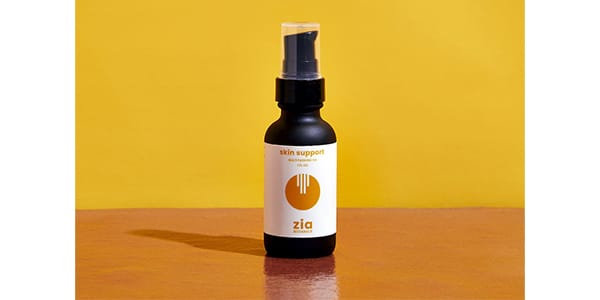
Comprised of just three ingredients — calendula, camellia, and marula oils — the multitasking oil works wonders to soothe and calm ultra-sensitive and reactive skin. Packing farm-grown calendula in a 100-percent recyclable aluminum container, the lightweight, quick absorbing blend defends against free radical damage, aids in tissue repair and skin healing, and promotes collagen production. $126, ziabotanics.com
FOR A REFINING CLEANSE: Foamie Too Coal To Be True Face Bar For Oily Skin
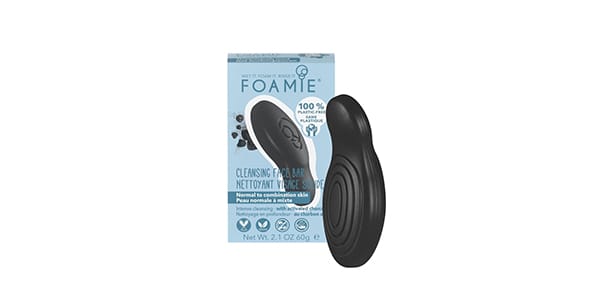
Unlike bar soaps that feature surfactants that disrupt the skin’s pH balance, this water-activated facial cleanser leaves it perfectly intact and removes every last trace of dirt and oil. Plus, each plastic-free solid bar saves about two plastic bottles. Less plastic means less waste and a cleaner planet. $10, foamie.us
FOR HYDRATING PERPETUALLY DRY SKIN: Ethique The Perfector
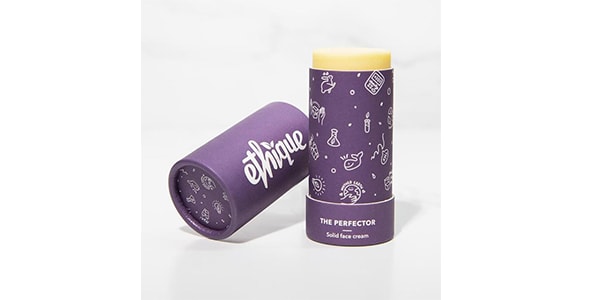
What started as a personal mission to reduce the amount of plastic and waste in the bathroom has exploded into a plastic-less beauty line. The Perfector is an ethically and fairly sourced vegan moisturizing stick that alleviates even the driest of skins. Chock-full of kokum butter, jojoba oil, and hyaluronic acid, use it day and night to drench skin in moisture. After finishing up the product, compost, bury, or plant the packaging — it will naturally break down and support healthy soil. $30, ethique.com
FOR CLEANSING WITHOUT WATER: Free + True Soft Power
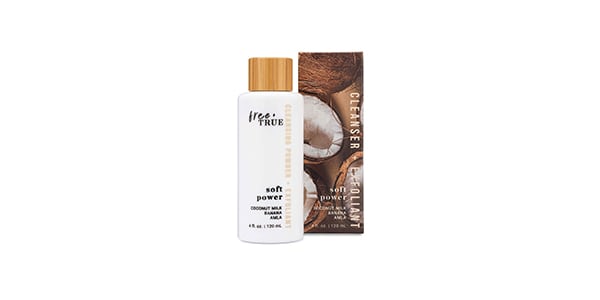
Aesthetician Tami Blake’s cleansing powder transforms into a creamy milk (when activated with water) and doubles as an exfoliant for super soft skin. Blake developed the preservative-free cleanser without water (the most commonly used ingredient in skincare) to help preserve the precious resource. And because it’s H20-less, its key ingredients, like coconut, oatmeal, and oils, are even more potent. $40, freeandtrueskincare.com
FOR SQUEAKY CLEAN STRANDS: Susteau Moondust Hair Wash
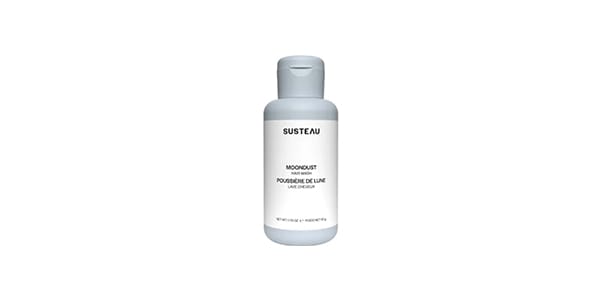
The planet was top of mind when creating this waterless powder-to-liquid shampoo, which comes in a bottle made from over 95-percent ocean-bound recycled plastic. Subscribing to a mantra of sustainability and the future of haircare, this vegan and cruelty-free wash gives a good cleanse without stripping the strands or leaving it looking flat. $29, susteau.com
FOR REEF-SAFE SUN PROTECTION: Goddess Garden Facial SPF 30 Mineral Sunscreen Lotion
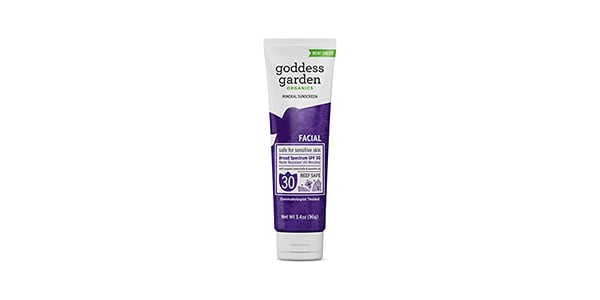
Safe enough to use on even the most sensitive skin, this sheer mineral sunscreen counts 20 percent zinc oxide as the primary sun protectant. Plus, the vegan, biodegradable formulation, which is slightly scented with organic lavender essential oil, features SPF 30 protection against both UVA and UVB rays to keep skin healthy and shielded from the sun. $15, goddessgarden.com
FOR THE CLEANEST HANDS EVER: Petal Hand Soap Kit
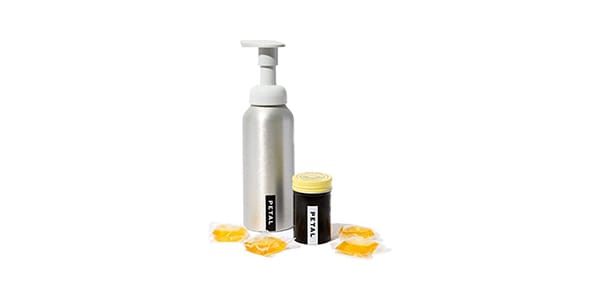
Intending to create less waste while maintaining clean hands, this fun-to-use soap features pre-measured pods that drop into reusable aluminum bottles. Add water, shake for one minute, and voila — you have a foaming hand wash that’s chock full of skin-friendly ingredients like essentials oils and plant-based surfactants. Since its launch, Petal has eliminated one million grams of plastic from landfills and our water. A portion of sales is donated to 1% for the Planet. $25, amazon.com
FOR SERIOUSLY SHINY HAIR: Earthly Body Marrakesh Moisture Masque
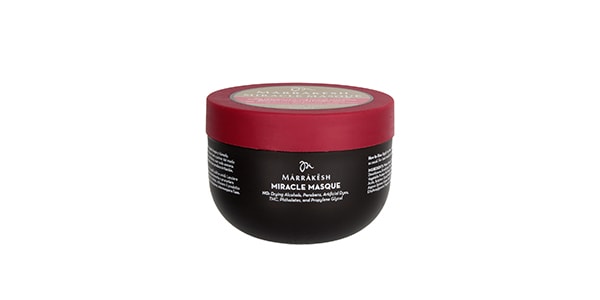
Even hair masks are getting in on the blue beauty movement. This intensely moisturizing vitamin E- and shea butter-rich hair mask works wonders on parched locks that are abused by constant heat styling while still abiding by a good-for-the-planet mantra. According to Wachs, Earthly Body has been about green, clean beauty since its inception in 1996. “Our DNA is about people over profits and always taking into consideration how what we do affects others,” he shares. $24, shop.earthlybody.com
All products featured are independently selected by our editors, however, AEDIT may receive a commission on items purchased through our links.
More Related Articles
Related Procedures

AI Plastic Surgeon™
powered by'Try on' aesthetic procedures and instantly visualize possible results with The AI Plastic Surgeon, our patented 3D aesthetic simulator.

